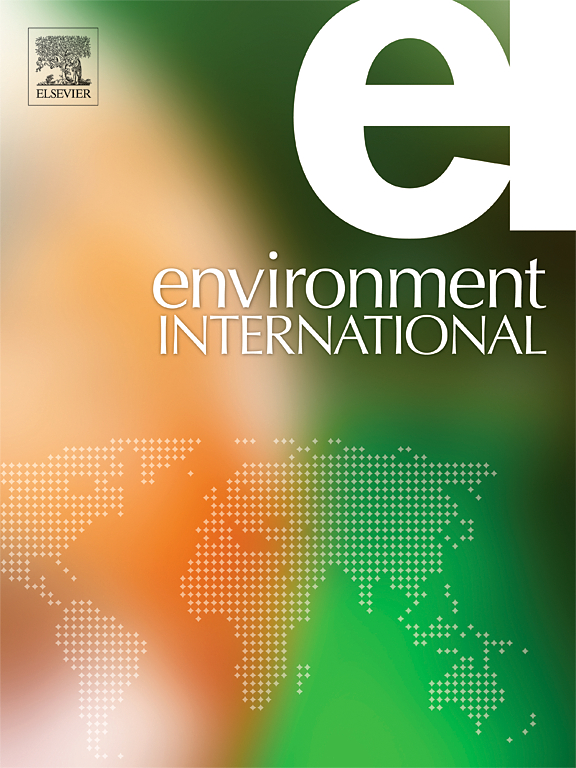法例对本港海洋环境的有机污染所产生的正面影响
IF 10.3
1区 环境科学与生态学
Q1 ENVIRONMENTAL SCIENCES
引用次数: 0
摘要
自 2008 年 9 月起,由于有机锡化合物 (OT) 对非目标海洋生物的毒性影响,国际海事组织在全球范围内禁止在海船防污系统中使用有机锡化合物 (OT)。然而,各国政府的法规执行情况不尽相同,影响了其控制 OTs 污染的效果。例如,香港特别行政区政府于 2017 年 1 月颁布了相关法规。本研究于 2022 年至 2023 年进行,旨在评估该法律及其执行是否显著减少了香港海洋环境中的 OTs 污染。结果显示,从2010年至2023年,海水中的丁基锡(BTs)浓度和岩贝Reishia clavigera中的OTs总量均有明显下降,但沉积物中只有二丁基锡(DBT)有所下降。三苯基锡 (TPT) 被确定为所有基质中的主要化合物,其含量与航运活动呈正相关。与 2010 年和 2015 年相比,R. clavigera 的输精管序列指数和不育雌性比例显示,Imposex 水平也显著下降。根据三丁基锡(TBT)和三苯基锡(TPT)对克拉维氏河蟹的组织负荷进行的概率风险评估表明,目前的三丁基锡水平已不再对腹足类动物产生重大不利影响,而三苯基锡(TPT)则可能影响其 68% 的种群。自立法以来的五年间,沿海水域中的三丁基锡化合物(BTs)和岩壳中的总体 OTs 显著减少,但三苯基锡化合物(TPT)仍处于令人担忧的水平。持续的风险管理措施和定期监测对进一步减轻香港水域的 TPT 污染至关重要。本文章由计算机程序翻译,如有差异,请以英文原文为准。


Positive impact of the legislation on organotins contamination in the marine environment of Hong Kong
Since September 2008, the use of organotin compounds (OTs) on antifouling systems on seagoing vessels has been globally banned by the International Maritime Organisation due to their toxic effects to non-target marine organisms. However, the regulation enforcement varies by government, hindering its effectiveness in controlling OTs contamination. For example, the Hong Kong Special Administrative Government enacted related legislation in January 2017. This study, conducted from 2022 to 2023, aimed to assess whether this law and its enforcement had significantly reduced OTs contamination in Hong Kong’s marine environment. The results showed significant reductions in concentrations of butyltins (BTs) in seawater and total OTs in the rock shell Reishia clavigera from 2010 to 2023, though only dibutyltin (DBT) decreased in sediment. Triphenyltin (TPT) was identified as the predominant compound in all matrices, with levels correlating positively with shipping activities. Imposex levels in R. clavigera also significantly decreased, as indicated by the vas deferens sequence index and the proportion of sterile female compared to 2010 and 2015. A probabilistic risk assessment based on tissue burden of tributyltin (TBT) and TPT in R. clavigera suggested that current TBT levels no longer had significant adverse effects on the gastropod, while TPT could impact 68% of their populations. Over a five-year period since the legislation, substantial reductions in BTs in coastal waters, and overall OTs in rock shells were observed, but TPT persisted at concerning levels. Continued risk management measures and regular monitoring are crucial to further mitigate TPT contamination in Hong Kong waters.
求助全文
通过发布文献求助,成功后即可免费获取论文全文。
去求助
来源期刊

Environment International
环境科学-环境科学
CiteScore
21.90
自引率
3.40%
发文量
734
审稿时长
2.8 months
期刊介绍:
Environmental Health publishes manuscripts focusing on critical aspects of environmental and occupational medicine, including studies in toxicology and epidemiology, to illuminate the human health implications of exposure to environmental hazards. The journal adopts an open-access model and practices open peer review.
It caters to scientists and practitioners across all environmental science domains, directly or indirectly impacting human health and well-being. With a commitment to enhancing the prevention of environmentally-related health risks, Environmental Health serves as a public health journal for the community and scientists engaged in matters of public health significance concerning the environment.
 求助内容:
求助内容: 应助结果提醒方式:
应助结果提醒方式:


